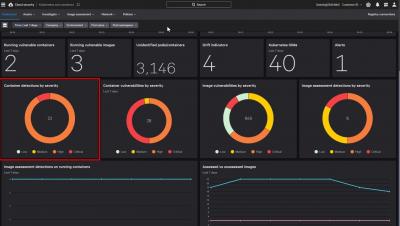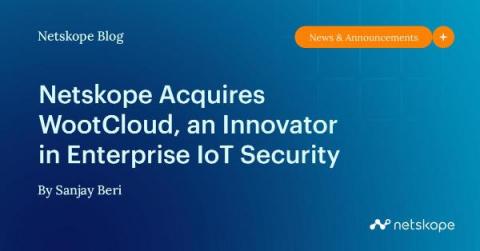Security | Threat Detection | Cyberattacks | DevSecOps | Compliance
Technology
How CrowdStrike Achieves Lightning-Fast Machine Learning Model Training with TensorFlow and Rust
Supercharging CrowdStrike’s artificial intelligence requires both human professionals and the right technologies to deliver blisteringly fast and accurate machine learning model training with a small footprint on the CrowdStrike Falcon® sensor. CrowdStrike data scientists continuously explore theoretical and applied machine learning research to advance and set the industry standard in protecting customers from sophisticated threats and adversaries.
Netskope Acquires WootCloud, an Innovator in Enterprise IoT Security
By 2025, there will be 55.7 billion connected IoT devices (or “things”), generating almost 80B zettabytes (ZB) of data. These are just some of the statistics that underscore enormous opportunity in IoT—and the enormous security risks all those IoT devices create.
Sumo Logic expands Cloud SIEM security coverage for Microsoft Azure
Protecting users with Falcon for Mobile
Building a More Secure Cloud: 5 Strategies for 2022
Cloud adoption continues to soar. More than two-thirds of small to mid-sized businesses intend to increase their use of cloud technologies over the next few years. While the cloud comes with many security benefits, it also carries unique concerns. As the cloud becomes increasingly central to business operations, cloud security should be a priority. Businesses must ensure this security from the ground up, not add it in later as an afterthought.
How to Protect Your Emails: 8 Best Gmail Account Security Tips
Have you ever had your Gmail account hacked? If not, you’re lucky. But it happens, 1 out of 4200 emails sent in 2020 was a phishing activity. Considering that 306 billion emails were sent in the same year, it means a whopping 72 million were phishing-related. Keeping your Gmail secure isn’t a request anymore. You don’t want anyone to access your personal information or compromise important company conversations and files.
Top 5 E-Commerce Cybersecurity Trends For 2022 That You Need To Know
Cyberattacks on e-commerce sites are always a frequent phenomenon. Every e-commerce retailer wants to improve the consumer experience, but if they're not careful, their efforts could transform their business website into a playground for cybercriminals. Without a doubt, they are gold mines of personal and financial information for threat actors. And as a result, companies worldwide are losing billions to e-commerce fraud (more than 20$ billion in 2021).
Dissolving Operational Security Challenges in a Hybrid Cloud Environment
Penetration Testing To Prevent API Attack
This blog describes the attack path we have uncovered during a recent penetration test of a web application, coupled with a back-end infrastructure assessment. Throughout we introduce different attack techniques and tools that can be used to attack the underlying infrastructure and APIs of a web application.











